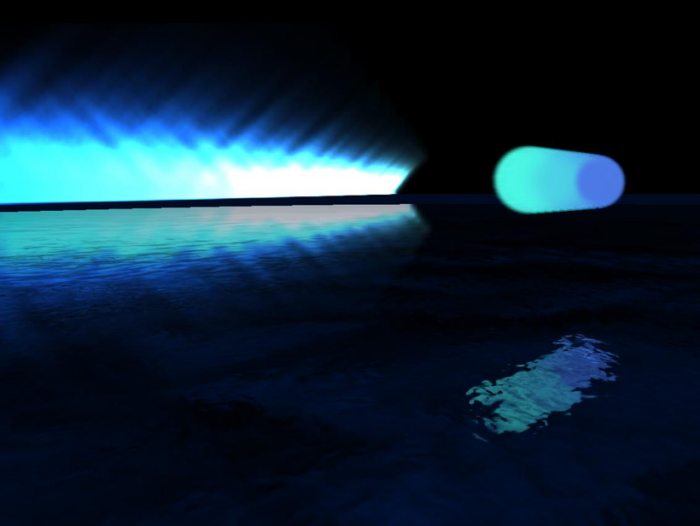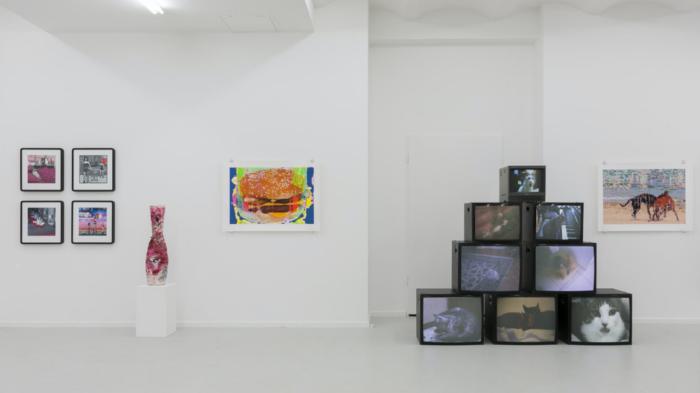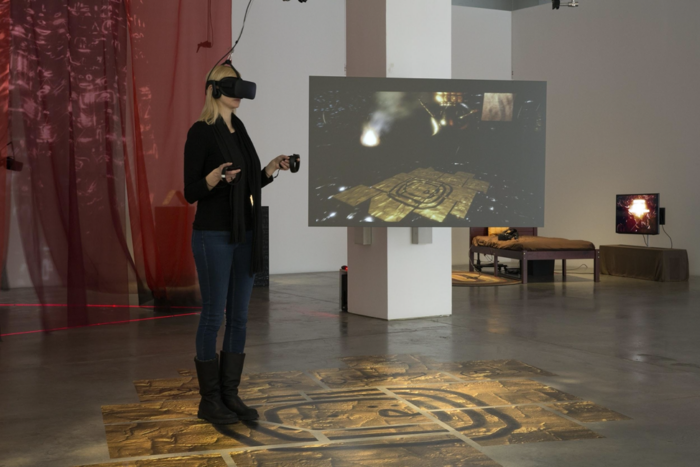As peer to space, the international curatorial platform prepares to celebrate its ten-year anniversary, head curator and trailblazer Tina Sauerlaender launches her latest project, PARS PRO TOTO. As a historian, curator, and writer, Sauerlaender has centered her career around communicating the influence the internet and new technologies have had on the physical environment and social customs through the visual arts. With peer to space, Sauerlaender hosted an impressive array of groundbreaking exhibitions and cemented her reputation as a pioneering curator in the medium of digital arts.
When I met Sauerlaender at a curatorial “speed-dating” session in the summer of 2017 I recall the anticipatory whispers which preceded her arrival. Since then her reverence for the digital medium and virtual reality works have earned her a newly appointed position as the Artistic Director of the VR Art Prize by DKB in Cooperation with CAA. I’m thrilled to catch up with Sauerlaender and chat about a few projects that reflect peer to space’s ten-year history and check-in with what‘s next.

KH: Hi Tina, I appreciate you chatting with us! Peer to space the international curatorial platform you founded is turning 10. Looking back, how have you and peer to space grown or shifted over the last decade?
TS: Our first exhibition Multiplex, which opened April 22, 2010, in Munich laid the foundation for what peer to space is now. For this show, co-founder Maja Block suggested inviting the Viennese artist collective VVORK to curate. At the time VVORK maintained its critical contemporary art blog. VVORK invited 31 international artists to participate in Multiplex, among them Paul Chan, Petra Cortright, Constant Dullaart, Agniezka Polska, and Rafaël Rozendaal. Digital moving image works were displayed on the four huge windows in the exhibition space which meant the videos were also clearly visible outside on a huge centrally located street in Munich.
Today, the concept of utilizing different channels with everchanging combinations of moving images finds itself in the structure of peer to space’s landing page. Thanks to Rhizome, they archived the VVORK blog, Multiplex was our first show to be documented in their online archive. For peer to space, this show represents our entry into the digital art world, which now forms the basis of our work.
Since then, peer to space has gone on to present a number of groundbreaking shows in the past 10 years like Porn to Pizza—Domestic Clichés an exhibition which muses on the influence of the internet on our personal lives and comfort zones (DAM Gallery, Berlin, Germany, 2015) and The Unframed World. Virtual Reality as Artistic Medium for the 21st Century at House of Electronic Arts in Basel (Switzerland, 2017).


KH: What has changed and what has remained the same with regards to peer to space?
TS: Many things from the initial concept of peer to space are still viable today.
Peer to space began as a platform independent of a traditional “brick-and-mortar” space. To this day we collaborate with a variety of institutions and work in a diverse range of spaces to showcase international group exhibitions. We also continue to work with a gamut of international curators. Darja Zub and peer to space’s project manager and curator Peggy Schoenegge organized the online exhibition Claiming Needles. Positions of Contemporary Embroidery Art; together with Carlotta Meyer and Benoit Palop I curated the online show Mermaids & Unicorns. With Mike Ruiz, the director of the Future Gallery, we curated the show Non-Stop Infinity in Munich and Berlin back in 2011.
The past ten years and all of these shows have allowed us the opportunity to focus on how the digital and the internet changes and shapes our personal living and social conditions of our time.
KH: What has changed with regard to your curatorial vision?
TS: In the beginning, our curatorial vision was “to present new forms of expressions and approaches in young contemporary art and as a platform for artistic exchange of knowledge.”
Over the years, while curating many different shows and gathering experience, I see my role today as a mediator between artistic expression and public perception. I create exhibition concepts that address today’s social, personal or political conditions in conjunction with the digital and the internet.
For the group shows, I select artists from different backgrounds to reveal their diverse perspectives on current themes and highlight their relationship to one another. With my shows, I aim to create a better understanding of the world we live in and to contribute to a more tolerant, open-minded, and empathic global society. I do not believe in art for art’s sake. I do believe that communicating art is not about simplicity or complexity but about finding the right words to convey their meaning.

KH: Let’s delve into the exhibition Speculative Cultures, recently on view at Parsons/The New School. Was the show initially built around VR-based works or did it develop in collaboration with your co-curators over time?
TS: From the beginning, Speculative Cultures was part of Erandy Vergara’s and my exhibition series Critical Approaches in VR Art which we conceived and realized in several editions in collaboration with the Goethe Institutes in Montréal, Toronto, Washington D.C. and Barcelona.
This series, as well as my first VR art, show The Unframed World focuses on exhibition concepts evolving around the connection between the virtual and the physical world. The Unframed World addressed the different conditions of both, for example how the physical laws apply in one world, but not the other.

KH: How did the selected artists use VR to envelop viewers in personal histories, mythologies, or constructed macrocosms?
TS The basis for Speculative Cultures are Virtual Reality artworks by artists Morehshin Allahyari (IRN/US), Scott Benesiinaabandan (CA), Matias Brunacci (ARG/DE), Yu Hong (CHN), Francois Knoetze (ZA), Erin Ko (US) and Jamie Martinez (COL/US). They each address either their own cultural background and history or focus on ancient cultures in their virtual reality artworks.
As the visitors or users experience these works alone in the VR headset, we asked every artist to additionally create a physical installation relating to the VR experience. Each installation embedded the VR work and formed an island in the exhibition space to emphasize their autonomy and individuality. This also allowed the works to connect via the exhibition space, which also symbolizes the common ground where people can meet, talk, and exchange. Visitors seeing the show would discover many relations between the works, reoccurring themes, and thoughts like sacred geometry or shamanism that play a role in many different cultures around the globe at different times.

KH: In a recent talk, you discussed the psychology and at times hesitation for some viewers to experience a VR piece within a public space. How do you utilize the physical space around a VR artwork in order to encourage viewers to explore the work?
TS: I first included a virtual reality artwork in my show When The Cat’s Away, Abstraction (Berlin, 2016). The show centered upon abstraction and addressed post-internet conditions of digital art.
Philip Hausmeier, now co-founder of the international VR art research platform Radiance VR, along with myself, contributed his work Mental Physics which we presented on a Samsung Gear VR headset.
I remember during the opening, none of the visitors dared to grab and use the headset on their own. We had to actively ask and convince the people to try it on and see the artwork. This hesitance results from the fears of not knowing what to do and doing something for the first time, not knowing what will happen plus being seen by others while learning these things. Luckily these anxieties seemingly vanished over the years.

KH: What runs through your mind when you walk into an exhibition space and see a VR headset?
TS: Whenever I see a headset in an exhibition, especially in museums, I am very happy!
Museums should proceed in including Virtual Reality in their shows just like any other artistic medium. Just like how the New Museum presented Daniel Steegmann Mangrané’s VR experience Phantom (kingdom of all the animals and all the beasts is my name) at the New Museum Triennial: Surround Audience in 2015.
Museum curators should be very aware of VR as a visual art form and focus on showing this kind of experiences in the context of art museums, and not take educational VR experiences, music videos, games or entertainment experiences for visual arts.
KH: Moore’s Law observes that the number of transistors on a microchip doubles every two years. Therefore having the cost of computers and the widespread availability of new technology more widely available and present within daily life. Are there any zeitgeists you’ve observed with regard to how and why artists apply new technologies within their work?
TS: Applying new technologies in art comes with its invention, as happened with mirrors, with photography, with film, with video, the internet and now VR and AR.
Actually, the first VR wave in art was already around in the late 80s and beginning of the 90s, when, for example, Jenny Holzer showcased her first VR artworks at the Guggenheim Museum in New York in 1993. However, many of today’s VR artists come from a background in painting, performance art, or other art fields, as VR or also AR just now is institutionalized with art academies and universities building Mixed Reality labs. This varies, of course, from country to country. Montréal for example was always on the forefront of VR since the beginning of the 1990s.
KH: Can you walk me through your current project PARS PRO TOTO? How did you meet Gloria Aino Grzywatz your co-curator? How do you foresee connecting with viewers through this series of online screenings?
TS: Pars Pro Toto, is a new online series that I co-curate along with art historian and member of the peer to space team Gloria Aino Grzywatz. We aim to showcase video artworks that focus on stories narrated from a very personal viewpoint by the artist or protagonist.
The works are then embedded in a thematic context that deals with cultural, social, political, or environmental issues. Future iterations will focus on a new topic and be released bimonthly.
Our first edition The Personal is Political by the artists Lizza May David and Claudia Liebelt, Christa Joo Hyun d’Angelo, JR, and Ora Ruven speak to the influence of power apparent in state authorities, demonstrated in times of war, and propagated through exclusion and discrimination. The collection of work reveals the arbitrariness of political decisions and who is and isn’t seen or heard.
We hope to explore large issues through the lens of an individual and activate viewers’ awareness in the hopes of and excite a deeper, more empathetic understanding of today’s global social conditions.
KH: Tina thanks so much for taking the time to chat with us and congratulations on your newly appointed position as the Artistic Director of the VR Art Prize by DKB in Cooperation with CAA. Your future is definitely bright!








